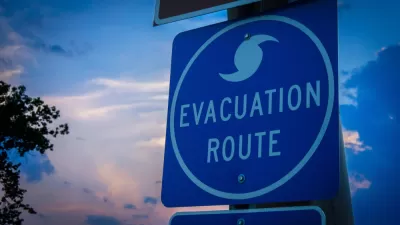Disaster prediction is a "growth industry", writes Nathaniel Rich, and one that has made incredible strides over the past several years. But will all this information lead us to make better decisions about where we choose to live?
"We are now able to prophesy impending cataclysms with a specificity that would have been inconceivable just several years ago," explains Rich. "Several factors have contributed to this progress: a growing public anxiety about disasters; advances in disciplines as disparate as computer science, fluid mechanics, and neuroscience; and an infusion of funding from governments, universities, and especially corporations, which have figured out that disaster planning saves money in the long run."
"Disaster predictions will become more accurate, but what difference will it make? Will it save lives, or even change behavior?"
"Many millions of people, of course, don’t have a choice—they cannot afford to move. But those who can leave—especially those who can leave—tend to stay. To rebuild is heroic; to move is a retreat, an act of cowardice. "
FULL STORY: THE NEW SCIENCE OF DISASTER PREDICTION

Alabama: Trump Terminates Settlements for Black Communities Harmed By Raw Sewage
Trump deemed the landmark civil rights agreement “illegal DEI and environmental justice policy.”

Planetizen Federal Action Tracker
A weekly monitor of how Trump’s orders and actions are impacting planners and planning in America.

The 120 Year Old Tiny Home Villages That Sheltered San Francisco’s Earthquake Refugees
More than a century ago, San Francisco mobilized to house thousands of residents displaced by the 1906 earthquake. Could their strategy offer a model for the present?

Housing Vouchers as a Key Piece of Houston’s Housing Strategy
The Houston Housing Authority supports 19,000 households through the housing voucher program.

Rural Population Grew Again in 2024
Americans continued to move to smaller towns and cities, resulting in a fourth straight year of growth in rural areas.

Safe Streets Grants: What to Know
This year’s round of Safe Streets for All grant criteria come with some changes.
Urban Design for Planners 1: Software Tools
This six-course series explores essential urban design concepts using open source software and equips planners with the tools they need to participate fully in the urban design process.
Planning for Universal Design
Learn the tools for implementing Universal Design in planning regulations.
Clanton & Associates, Inc.
Jessamine County Fiscal Court
Institute for Housing and Urban Development Studies (IHS)
City of Grandview
Harvard GSD Executive Education
Toledo-Lucas County Plan Commissions
Salt Lake City
NYU Wagner Graduate School of Public Service




























